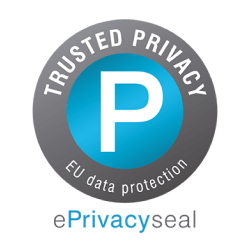Push Notification
A push notification, or push message, is a short, attention-grabbing alert sent directly to a user’s device, whether a smartphone, tablet, desktop, or wearable. These messages appear instantly on the screen, even when the user isn’t actively using an app or visiting a website, and remain in the device’s notification panel until cleared, making them an effective way to reach and engage audiences without requiring immediate interaction.
For example, an e-commerce platform can send a push notification to remind a shopper about an abandoned cart or notify them of an exclusive flash sale, encouraging immediate engagement.
Why use Push Notifications?
- Increase user engagement and conversions by sending personalized messages based on behavior, such as abandoned cart reminders or location-based offers, to bring users back to your app or website.
- Share time-sensitive updates instantly, keeping customers informed about order statuses, flash sales, or breaking news, even when your app is not open.
- Coordinate campaigns across multiple channels by combining push notifications with email, SMS, and in-app messaging to drive higher engagement and measurable results.
Mobile Push Notification vs. Web Push Notification vs. In-App Message
| Mobile Push Notification | Web Push Notification | In-App Message | |
| Autonomy | Yes (app not open) | Yes (browser not open) | No (requires app open) |
| Context | Device/user-based, can use location | Browser/session-based | Session/feature-based |
| Integration | Requires app & SDK | Requires web push setup | Part of app/web experience |
| Learning | Supports segmentation, personalization, A/B testing | Supports personalization, triggered actions | Often rules- or API-driven |
| Example | “Sale ends soon—shop now!” | “Back in stock: Get yours before it’s gone” | “Welcome, get started with a tour!” |
FAQs
Push notifications deliver short, direct messages straight to a user’s device without requiring an inbox, phone number, or email address. They appear instantly on the screen, making it easier to capture attention and drive quick engagement. To learn how push notifications work and how to use them effectively, see our push notification marketing guide.
Yes. Both mobile and web push notifications require users to opt in. Users can revoke their permission at any time through their device or browser settings. For guidance on encouraging opt-ins while respecting user choice, see our Web Push Opt-in Reminders.
To increase push notification engagement, send relevant, personalized notifications at the right time. Include clear calls to action, avoid sending messages too frequently, and use triggered or segmented pushes based on factors like location, behavior, or interests. For a deeper dive, read our Best Practices for Single Web Push Guide.
Push notifications are supported by most major browsers, including Chrome, Firefox, Edge, and Safari, as well as operating systems such as iOS, Android, Windows, and macOS. On iOS, web push notifications require users to add the web app to their home screen. For complete compatibility details, see our Web Push Notifications Overview.












